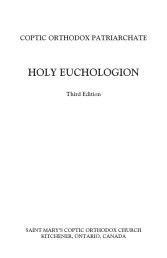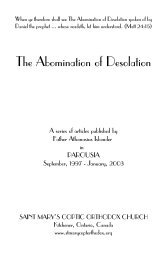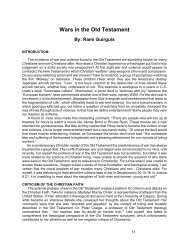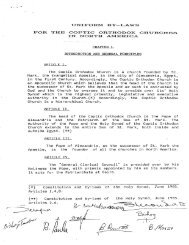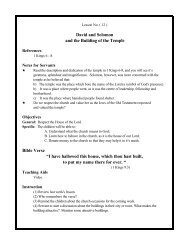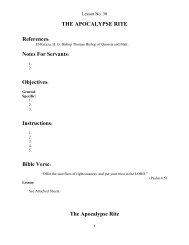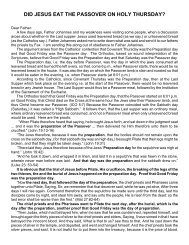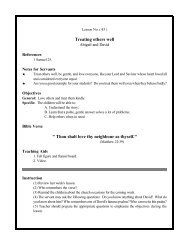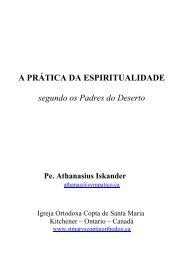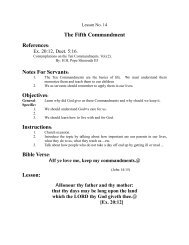Creation - St. Marys Coptic Orthodox Church
Creation - St. Marys Coptic Orthodox Church
Creation - St. Marys Coptic Orthodox Church
You also want an ePaper? Increase the reach of your titles
YUMPU automatically turns print PDFs into web optimized ePapers that Google loves.
1965: PENZIAS AND WILSON<br />
In 1965 Arno A. Penzias and Robert W. Wilson of Bell Laboratories<br />
were testing a sensitive horn antenna which was designed for detecting<br />
low levels of microwave radiation. They discovered a low level of<br />
microwave background “noise”, like the low level of electrical noise<br />
which might produce “snow” on a television screen. After unsuccessful<br />
attempts to eliminate it, they pointed their antenna to another part of<br />
the sky to check whether the “noise” was coming from space, and got<br />
the same kind of signal.<br />
Finding no explanations for the origin of the noise, they finally<br />
concluded that it was indeed coming from space, but that it was the<br />
same from all directions. 1<br />
They later realized that they had accidentally confirmed George<br />
Gamow’s predictions made 17 years earlier. They discovered the “echo”<br />
of the Big Bang.<br />
Penzias and Wilson were awarded the Nobel Prize in 1978 for their<br />
discovery. Later on, Penzias writes this about his discovery:<br />
Astronomy leads us to a unique event, a Universe which was<br />
created out of nothing, one with the very delicate balance needed<br />
to provide exactly the conditions required to permit life, and one<br />
which has an underlying, one must say, supernatural plan.<br />
Slowly but surely, scientific discoveries were chipping away at the so<br />
called “theory of evolution”.<br />
1992: NASA’S COBE (Cosmic Background explorer)<br />
One of the predictions that were made if the Big Bang theory is to<br />
stand, is that the background radiation should be measurable as a<br />
temperature, and that there should be small variations of temperature<br />
on the order of one part in 10,000.<br />
For years, NASA, tried several times to measure the temperature of<br />
this background radiation but, according to them: “None of our<br />
previous instruments were sensitive enough to measure this small<br />
variation.”<br />
1 http://hyperphysics.phy-astr.gsu.edu/hbase/astro/penwil.html<br />
9



